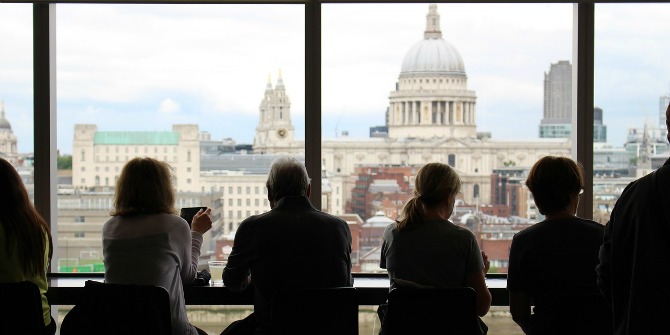 Digital innovations can extend the reach and relevance of libraries beyond their existing print collections. Peter Carrol of the LSE Library provides an overview of recent digital projects undertaken and highlights their role in protecting LSE’s heritage and contributing to its future. Of particular interest is how archived material from The Women’s Library @ LSE have been transformed into interactive platforms, ranging from online exhibitions to smartphone apps.
Digital innovations can extend the reach and relevance of libraries beyond their existing print collections. Peter Carrol of the LSE Library provides an overview of recent digital projects undertaken and highlights their role in protecting LSE’s heritage and contributing to its future. Of particular interest is how archived material from The Women’s Library @ LSE have been transformed into interactive platforms, ranging from online exhibitions to smartphone apps.
LSE Library is committed to developing its digital collections so that they match the strength of existing print collections. With this objective in mind, the Digital Library has embarked on a number of major projects to enhance the digital experience of all Library users, enhancing the profile of the entire collection and utilising the full range of resources available to the Library. The Digital Library aims to support research and teaching at LSE in two specific ways. The first is by building, collecting and preserving digital collections for the future. The second is by making the Library’s historic and contemporary collections available to the online community through new and innovative platforms. Here is a selection of some of the projects the Digital Library has been working on.

Other projects launched in recent years include the digitisation project for The Beaver, the newspaper of the Students’ Union at LSE, which ensured that print issues from the publication from 1949-2008 were made available. Over 20,000 pages were covered in total. Similarly Beatrice Webb’s diary saw the digitisation 17,000 pages of the LSE co-founders’ diaries and notes. In June 2013, the Library launched its Emily Wilding Davison Online Exhibition to mark the 1913 centenary of the suffragette’s death at the Epsom Derby. The carefully chosen materials used in the exhibition provide a record of Davison’s remarkable life- her achievements, relationships and her dedication to the suffragette cause.
This month, the Library launched The Women’s Library @ LSE Online , a presentation of materials relating to women’s history from the 16th century to the present day. The site allows users to take a historical journey through the personal, political and economic struggles that have symbolised women’s battle for equality through the ages, presenting a representative sample of the broad range of unique materials contained within the collection.

As these projects demonstrate, the range of digitisation programmes the Library have completed have provided a fantastic opportunity for digital innovation. By working to preserve historic collections and building capacity for the future, the Digital Library will play a key role through both protecting LSE’s heritage and contributing to its future- supporting teaching and research at every step of the way.
Note: This article gives the views of the author, and not the position of the Impact of Social Science blog, nor of the London School of Economics. Please review our Comments Policy if you have any concerns on posting a comment below.
Peter Carrol is the Communications Officer for the Library at LSE.








2 Comments